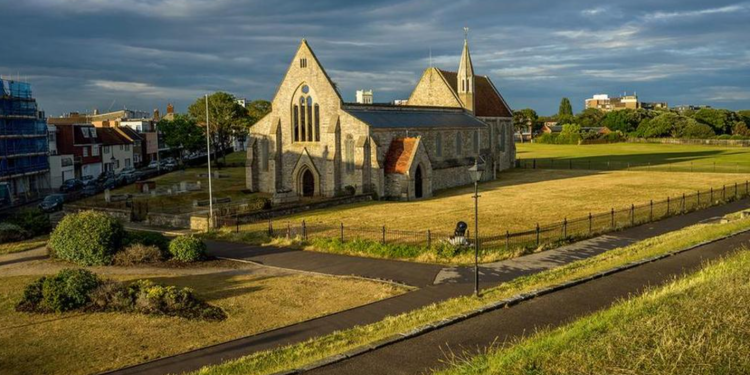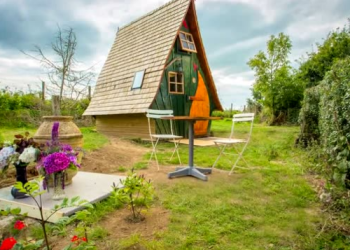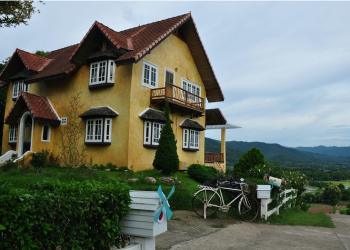The Art Deco movement, characterized by its opulence, glamour, and geometric motifs, has experienced a resurgence in popularity in recent years. Inspired by the elegance and sophistication of the Roaring Twenties, the Art Deco revival brings a touch of old-world charm and luxury to modern interiors. In this article, we’ll delve into the characteristics of Art Deco design, explore ways to incorporate it into contemporary spaces, and discuss the benefits and challenges of embracing this glamorous style.
Introduction
Definition of Art Deco Revival
The Art Deco revival refers to a renewed interest in the design aesthetic of the Art Deco movement, which flourished during the 1920s and 1930s. This revival draws inspiration from the opulence and glamour of the Roaring Twenties, infusing modern interiors with elements of luxury, sophistication, and style.
Historical Context of the Roaring Twenties
The Roaring Twenties, a period of economic prosperity and cultural dynamism in the United States and Europe, saw the rise of the Art Deco movement. Characterized by its bold geometric shapes, lavish ornamentation, and emphasis on modernity, Art Deco became synonymous with the spirit of the Jazz Age, influencing architecture, fashion, and interior design.
Characteristics of Art Deco Design
Opulence and Glamour
At the heart of Art Deco design is a sense of opulence and glamour. Inspired by the luxury and excesses of the 1920s, Art Deco interiors feature lavish materials, rich colors, and ornate detailing that exude a sense of sophistication and grandeur.
Geometric Patterns and Symmetry
Geometric patterns and symmetry are hallmarks of Art Deco design, reflecting the influence of Cubism and Futurism on the movement. Bold, angular shapes, such as chevrons, sunbursts, and zigzags, are commonly used to create dynamic and visually striking compositions.
Luxurious Materials
Art Deco interiors are characterized by the use of luxurious materials such as exotic woods, polished metals, and glossy lacquers. These materials add depth, texture, and shine to the space, enhancing its sense of elegance and refinement.
Color Palette
Bold and Dramatic Colors
Art Deco interiors often feature a bold and dramatic color palette, with deep jewel tones such as emerald green, sapphire blue, and ruby red being popular choices. These rich hues create a sense of warmth and intimacy, adding depth and character to the space.
Metallic Accents
Metallic accents, such as gold, silver, and brass, are commonly used in Art Deco interiors to add a touch of glamour and sophistication. These metallic finishes reflect light and create a sense of luxury, while also adding visual interest and contrast to the space.
Furniture and Decor
Streamlined Silhouettes
Furniture in Art Deco interiors is characterized by its streamlined silhouettes and geometric forms. Clean lines, angular shapes, and sculptural details create a sense of modernity and elegance, while also maximizing visual impact.
Statement Pieces
Statement pieces are key to achieving the glamorous look of Art Deco interiors. Bold furniture designs, such as oversized sofas, geometric coffee tables, and statement lighting fixtures, serve as focal points that anchor the space and command attention.
Mirrored Surfaces
Mirrored surfaces are a signature feature of Art Deco design, adding depth, dimension, and luminosity to the space. Mirrored furniture, such as console tables and sideboards, as well as mirrored accents, such as wall panels and decorative accessories, create a sense of glamour and sophistication.
Lighting
Ornate Chandeliers
Ornate chandeliers are a staple of Art Deco interiors, adding drama and elegance to the space. With their intricate designs, sparkling crystals, and polished metal finishes, chandeliers serve as statement pieces that illuminate the room while also serving as works of art in their own right.
Sconces and Wall Lights
Sconces and wall lights are another important element of Art Deco lighting design. With their sleek lines, geometric shapes, and decorative detailing, these fixtures provide ambient lighting and enhance the overall atmosphere of luxury and sophistication.
Incorporating Art Deco into Modern Interiors
Mixing Eras and Styles
One approach to incorporating Art Deco into modern interiors is to mix eras and styles. Pairing Art Deco furniture and decor with contemporary pieces creates a dynamic and eclectic look that feels fresh and innovative while still paying homage to the glamour of the 1920s.
Focus on Key Elements
Another approach is to focus on key elements of Art Deco design, such as geometric patterns, luxurious materials, and metallic accents. By selectively incorporating these elements into the space, you can evoke the essence of Art Deco without overwhelming the room with period-specific details.
Creating a Glamorous Atmosphere
Velvet Upholstery
Velvet upholstery adds a touch of luxury and sophistication to Art Deco interiors. With its plush texture, rich colors, and subtle sheen, velvet upholstery creates a sense of opulence and comfort that is synonymous with the Art Deco aesthetic.
Rich Textures and Fabrics
Rich textures and fabrics, such as silk, satin, and brocade, are also key to creating a glamorous atmosphere in Art Deco interiors. These luxurious materials add depth and dimension to the space, while also enhancing its sense of elegance and refinement.
Statement Artwork
Statement artwork plays a crucial role in Art Deco interiors, serving as focal points that draw the eye and spark conversation. Bold paintings, sculptural installations, and decorative wall panels add personality and drama to the space, while also reflecting the artistic spirit of the Roaring Twenties.
Case Studies
Examples of Art Deco Revival Interiors
Explore real-life examples of Art Deco revival interiors, from luxurious penthouses to chic boutique hotels. These case studies showcase the versatility and appeal of Art Deco design in contemporary settings, demonstrating how this glamorous style can be adapted to suit different tastes and lifestyles.
Benefits of Art Deco Design
Timeless Elegance
One of the main benefits of Art Deco design is its timeless elegance. Inspired by the glamour of the Roaring Twenties, Art Deco interiors exude a sense of luxury and sophistication that never goes out of style, making them a timeless choice for modern homes.
Enhancing Spaces with Character
Art Deco design has the ability to transform ordinary spaces into extraordinary environments filled with character and personality. Whether it’s a chic living room, a glamorous dining area, or a stylish bedroom, Art Deco interiors add a touch of drama and sophistication that sets them apart from the ordinary.
Challenges and Solutions
Balancing Opulence and Moderation
One challenge of embracing Art Deco design is finding the right balance between opulence and moderation. While Art Deco interiors are known for their lavish materials and ornate detailing, it’s important not to overwhelm the space with excessive decoration. By exercising restraint and focusing on key elements, you can create a glamorous yet tasteful environment that feels stylish and sophisticated.
Incorporating Art Deco in Small Spaces
Another challenge is incorporating Art Deco design in small spaces, where every square inch counts. In these situations, it’s important to prioritize functionality and practicality while still capturing the essence of Art Deco style. Choosing streamlined furniture, maximizing natural light, and using mirrors to create the illusion of space can help make smaller rooms feel more open and inviting.
Practical Tips for Embracing Art Deco
Start with Statement Pieces
Begin by selecting one or two statement pieces that embody the glamour and sophistication of Art Deco design, such as a sleek sofa, a sculptural coffee table, or an ornate chandelier. These focal points will set the tone for the rest of the space and serve as anchors around which you can build your design scheme.
Pay Attention to Details
Pay attention to details such as finishes, textures, and accessories, as these elements play a crucial role in capturing the essence of Art Deco style. Choose luxurious materials such as marble, brass, and velvet, and incorporate decorative accents such as geometric patterns, mirrored surfaces, and metallic finishes to add depth and visual interest to the space.
Don’t Overwhelm the Space
While it’s important to embrace the glamour and sophistication of Art Deco design, it’s also important not to overwhelm the space with excessive decoration. Keep the overall aesthetic clean and cohesive, and avoid cluttering the room with too many competing elements. Focus on quality over quantity, and let each piece shine on its own merits.
Conclusion
The Art Deco revival offers a glamorous and sophisticated approach to interior design, inspired by the opulence and excesses of the Roaring Twenties. By embracing the key elements of Art Deco style, such as geometric patterns, luxurious materials, and metallic accents, you can create a space that exudes elegance, sophistication, and timeless charm.
FAQs After The Conclusion
- Is Art Deco design suitable for all types of homes?Yes, Art Deco design can be adapted to suit a variety of architectural styles and living spaces, from modern apartments to traditional homes.
- What are some common misconceptions about Art Deco design?One common misconception is that Art Deco design is overly ornate and fussy. In reality, Art Deco interiors can be sleek, streamlined, and sophisticated, with a focus on clean lines and geometric shapes.
- How can I incorporate Art Deco design into a contemporary space?You can incorporate Art Deco design into a contemporary space by focusing on key elements such as geometric patterns, luxurious materials, and metallic accents, and by mixing Art Deco furniture and decor with modern pieces for a dynamic and eclectic look.
- What are some budget-friendly ways to embrace Art Deco style?Budget-friendly ways to embrace Art Deco style include shopping for vintage and thrifted pieces, DIYing your own Art Deco-inspired decor, and focusing on key elements such as geometric patterns and metallic accents.
- What are some iconic Art Deco furniture pieces?Some iconic Art Deco furniture pieces include the Eames Lounge Chair, the Barcelona Chair, and the Tulip Table, all of which are characterized by their sleek lines, geometric forms, and luxurious materials.
- Can Art Deco design be combined with other styles?Yes, Art Deco design can be combined with other styles such as mid-century modern, bohemian, and industrial to create a unique and personalized look that reflects your tastes and preferences.
- What are some tips for creating a cohesive Art Deco-inspired interior?Tips for creating a cohesive Art Deco-inspired interior include sticking to a consistent color palette, repeating motifs and patterns throughout the space, and balancing opulence with moderation to create a harmonious and visually pleasing environment.
- Where can I find inspiration for Art Deco design?You can find inspiration for Art Deco design in interior design magazines, books, and websites, as well as by visiting museums and historic landmarks that showcase Art Deco architecture and design.












